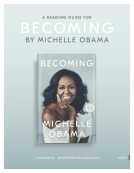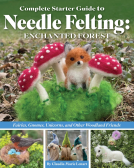
Book of Beasts
The Bestiary in the Medieval World
by Edited by Elizabeth Morrison with Larisa Grollemond
This title was previously available on NetGalley and is now archived.
Send NetGalley books directly to your Kindle or Kindle app
1
To read on a Kindle or Kindle app, please add kindle@netgalley.com as an approved email address to receive files in your Amazon account. Click here for step-by-step instructions.
2
Also find your Kindle email address within your Amazon account, and enter it here.
Pub Date Jun 04 2019 | Archive Date Aug 07 2019
Getty Publications | J. Paul Getty Museum
Talking about this book? Use #BookOfBeasts #NetGalley. More hashtag tips!
Description
Brimming with lively animals both real and fantastic, the bestiary was one of the great illuminated manuscript traditions of the Middle Ages. Encompassing imaginary creatures such as the unicorn, siren, and griffin; exotic beasts including the tiger, elephant, and ape; as well as animals native to Europe like the beaver, dog, and hedgehog, the bestiary is a vibrant testimony to the medieval understanding of animals and their role in the world. So iconic were the stories and images of the bestiary that its beasts essentially escaped from the pages, appearing in a wide variety of manuscripts and other objects, including tapestries, ivories, metalwork, and sculpture.
With over 270 color illustrations and contributions by twenty-five leading scholars, this gorgeous volume explores the bestiary and its widespread influence on medieval art and culture as well as on modern and contemporary artists like Pablo Picasso and Damien Hirst.
Available Editions
| EDITION | Other Format |
| ISBN | 9781606065907 |
| PRICE | $60.00 (USD) |
| PAGES | 354 |
Links
Featured Reviews
A fine example of just how good exhibition-accompanying volumes can be when they are done correctly.
The Getty's Book of Beasts takes a well-organized and erudite look at this fascinating sub-genre of medieval manuscripts, which are also the subject of the museum's upcoming exhibition.
The structure and organization of the volume are well above average, the disbursement of the plates amid the text being notably better than usual as well. Some visual elements of the book are difficult to rate using a digital ARC (some page-spacing issues and greyed out text which I expect will not present in published copies).
The included essays were a bit of a mixed bag. While none are poorly done or problematic, there are certainly some which present better than others. Notably exceptional standouts include Elizabeth Morrison's essay on problems in page design, Larisa Grollemond's piece on beasts at court, and Debra Higgs Strickland's work on the beastiary in medieval world maps.
 Agnes P, Reviewer
Agnes P, Reviewer
Exceptionally rich and gorgeusly illustrated book with many essays from various authors mostly about medieval bestiaries, including also depictions of real or fantastic animals in modern ages. Lions, tigers, beavers, foxes, whales, apes, etc., but also dragons, unicorns, griffins, sirens, centaurs, "cosmic" animals. Images that you can rarely see elsewhere, very interesting ones (for example Alexander the Great in a kind of submarine meets a whale) and sometimes also funny (for example the bonnacon that uses its fart as weapon or the elephant depicted obviously by someone that has never seen one). The images are accompanied by explanations and also the moralisations the authors of the original bestiaries attached to them (Christ simbolized by the unicorn, the pelican, etc.).
A wonderful collection of essays to accompany a museum exhibit. There is a wealth of information in these pages that will keep readers turning the page and wanting more.
Thank you NetGalley and Getty Publications for the opportunity to read an advance reader copy.
 Hilary W, Reviewer
Hilary W, Reviewer
This was a hard book to review, because it was so difficult to read – every time I picked it up I had difficulty moving past the glorious images – vibrant, curious and compelling – that required hours of browsing and musing. Even a non specialist would find this one massively and persistently compelling.
It is intended as a catalogue to the exhibition this year at the John Paul Getty Museum of medieval bestiaries – an exhibition that will be an extraordinary cultural experience in itself. But it has been supported by a series of articles by leading scholars in the field, gathered here to provide latest thought in developing research in their (and closely related) field. So expect a series of images – wonderful images - specialist articles on both broader and tighter themes and detailed individual descriptions of the hundred plus pieces that will be on display.
The bestiaries have been gathered from leading collections around the world and this represents the largest gathering of its type ever undertaken. They cover the earliest to the latest, Latin to vernacular and strictly religious to more secular. This allows their history to be tracked from pre-Christian origins to the very recent bestiary inspired art, with linkage to both Jewish and Islamic images.
There will be samples of all the beasts, both real and imagined, in glorious and somewhat unexpected colours – blue tigers are memorable! From exemplary drawings used to indicate each animal to later images that reflect a wider cultural background, court life, hunting, agriculture, and some decidedly determined cats. Each animal could symbolise a moral, morals, or allegorical tales. All beast types are covered. This catalogue carefully selects a range of first rate images to illustrate both this aspect and the wider academic understandings of the pieces.
The articles reflect this understanding too – and it is an important volume in that respect as it allows detailed examination of links between individual bestiaries, their possible place of creation and the transmission of ideas and designs. Bestiaries were developed as an educational tool for a religious context to inform on specific and detailed Christian morals and beliefs – each, at least, an impactful aide memoir, at greatest, a route to deeper spiritual thought and understanding. The academic review could be considered enough in itself, but even for a non specialist it allows one to think through exactly what one is looking at – and take time to focus on the individual images – which, it must be remembered, are some of the great glories of medieval art, culture and creativity.
Another whole sub-set of the display and volume is the same beasts and presentations in their wider usage across a huge range of other items, all of them intriguing in their own right – books, architecture, glass, metalwork, embroideries, jewellery and caskets among others. Thus creating a window on aspects of the medieval past – lived at least by the wealthy.
The exhibition will no doubt be a wonderful experience for visitors – regretfully not including me – but the catalogue is another window of opportunity, albeit in a different dimension and with the option of a different timescale and perspective, to view and understand the pieces. Not just as art pieces but as cultural jewels and spiritual aids. What a brilliant book.
Thanks to Getty Publications and NetGalley for the Advance Review Copy in exchange for an honest review.
This is an absolutely lovely book and my only regret is that I will not be able to see the exhibition it accompanies.
Contained within are beautiful images drawn by Medieval artists of animals (both real and mythical) and other subjects. It's perhaps clear that the artists never saw some of these animals, and the illustrations are often fanciful at best but are all the more interesting and fun for it. The colours and details are reproduced in stunning detail and the book is laid out in a coherent and engaging way.
The history and context is provided in an interesting and engaging way but may slant too much towards the academic for some. Despite the level of detail and sources provided, the editors of this book have let the pictures take centre stage.
Overall, a gorgeous book with stunning imagery. Yes, some of them are amusing to the modern eye (that whale, come oooooon) they are all the more charming for it.
Let me get the easy part out of the way. As would be expected from a Getty title, this is a magnificently illustrated and informative book on bestiaries. The publisher tells us there are 270 illustrations in the book and each of them is a joy, meticulously reproduced and almost jumping off the printed page.
This is a catalog of an on-going show at the Getty which must be a marvel to behold. Bestiaries are a peculiar genre of book which are to be enjoyed for the fantastical elements of the work, how the folks of a distant age envisioned and cataloged their world to the best of their abilities. Seeing how ordinary animals that we are closely familiar with is often a surprise as we try to understand how the creatures we know were distorted through the telling to finally end up on the page of a bestiary.
T. H. White, in his book "The Bestiary," makes the point that we can find these illustrations quaint and amusing but we have to credit the monks and scholars who are working from descriptions of frequently unknown creatures that have been recorded by travelers doing their best to comprehend what they have never seen before. (I recommend the White book as a companion to this one as it quotes directly from animal descriptions in bestiaries which this volume only infrequently does.)
The last section of the book deals with more recent books of animals, primarily artist's books and fine press titles. While the portrayal of animals is obviously more accurate, the illustrations have much of the same charm of discovery.
I recommend this book highly for anyone interested in medieval art or merely the inventiveness of man.
Readers who liked this book also liked:
Silvia Moreno-Garcia
Historical Fiction, Literary Fiction, Sci Fi & Fantasy


















